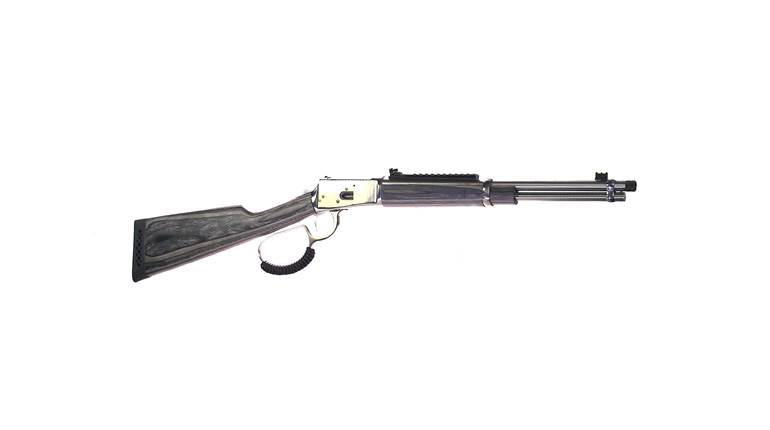
The British army in the interwar years tested “gangster weapons,″ as submachine guns were referred by some high-ranking British officers. While impressed by the Thompson, the British didn’t think they needed them. The start of World War II—and Germany’s extensive use of the MP38—changed their minds. The only submachine gun available to the British, though, was the Thompson—and they started ordering them from Auto-Ordnance.

The problem with Thompsons is they are expensive (about $225 in 1940) and time consuming to make. Then there was the problem of German U-boats sending large quantities them to the bottom of the Atlantic. The British copied the Bergman MP28 II with their 9 mm Lanchester, but the gun, which fed from a 50-round side-mounted magazine, was slow and expensive to make, requiring extensive machining. No, what they needed was a gun that could be made quickly with the minimal use of machine tools.
The basic design for the Sten was completed in 1940 by Major Reginald Shepherd and Mr. Harold Turpin at the Royal Small Arms Factory Enfield. The name came from the initials of its designer and the first two letters of Enfield. The first gun was the Mk I, which was actually quite a nice gun, albeit a simple blowback capable of either semi-automatic or full-automatic fire via a selector or “change lever” in the receiver. The only safety was a slot in the receiver to capture the cocking handle, below its slot on the early guns, but above on the later models, staring with the Mk II. The Mk I had an oblong flash hider, front sight protectors, a foldable, wooden front pistol grip and a wooden fore-end. The gun was 35" long and weighed about 8 lbs.

The next model was the Mk I *, which did away with the fore-end and fore-grip, and in many ways its receiver’s lines are similar to the Sterling, which replaced the Sten in 1953.
The most produced version of the Sten was the Mk II, which did away with the flash hider (shortening its overall length to 30”) and had a simple method of barrel attachment. Even cruder was the fixed-barrel Sten Mk III made by the Lines Brothers toy company, which it has been reported only took five hours to make a complete gun. The final version of the Sten was far nicer Mk V.
Extensive use was made of stampings and simple welds. Assemblies could be made in small shops otherwise not making arms, then assembled as completed guns. The cost for a Sten Mk II was 15 shillings each or about $10. In all, more than 4 million Sten guns were made, and of that total less than 200,000 were the Mk I or Mk I *, making them relatively scarce today. To learn more about these early Sten Machine Carbines, watch the NRA Gun of the Week video hosted by American Rifleman’s Mark Keefe.
Additional Reading:
“Grim Reapers”: The Machine Guns of World War I
The Sterling: Britain’s Cold War Submachine Gun
General Motors Went To War
D-Day + 75: Arms of the Airborne































